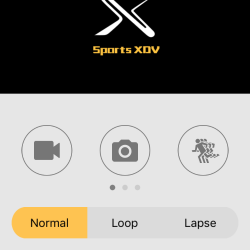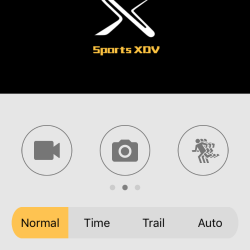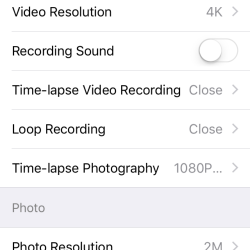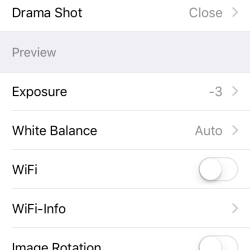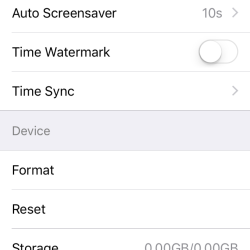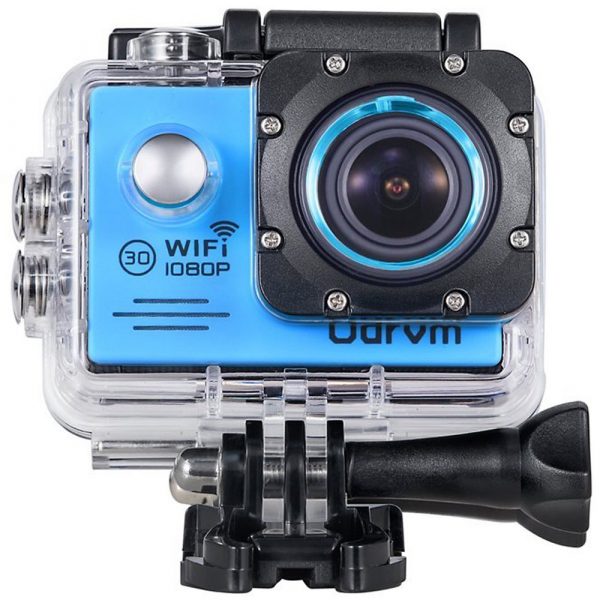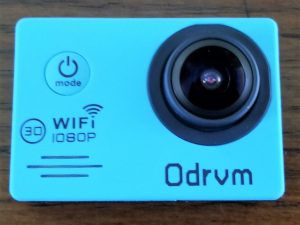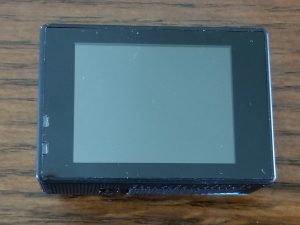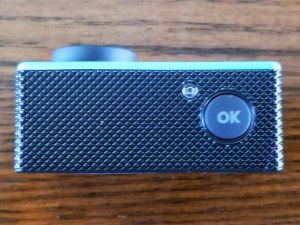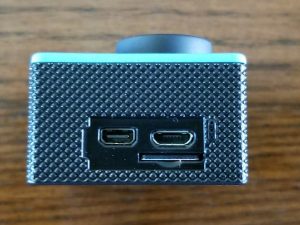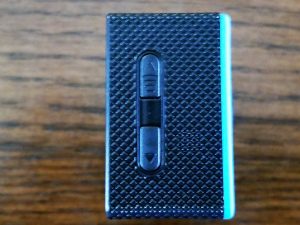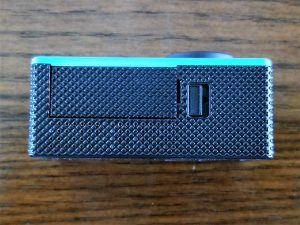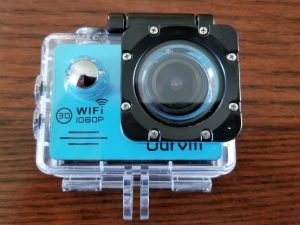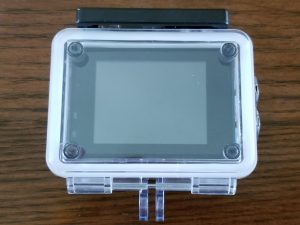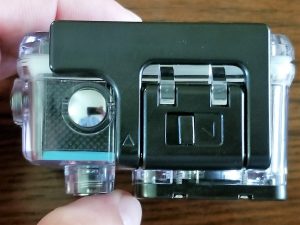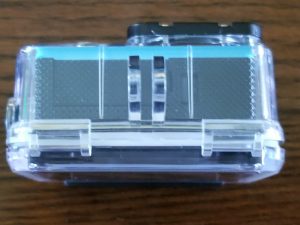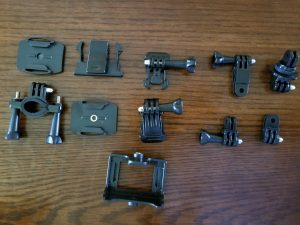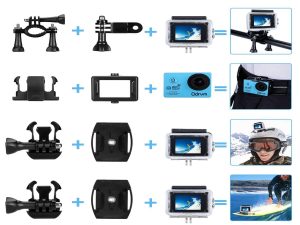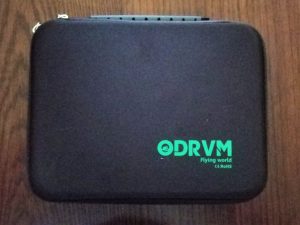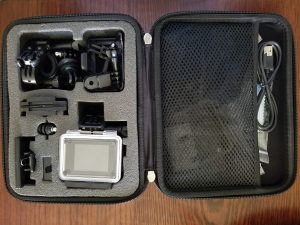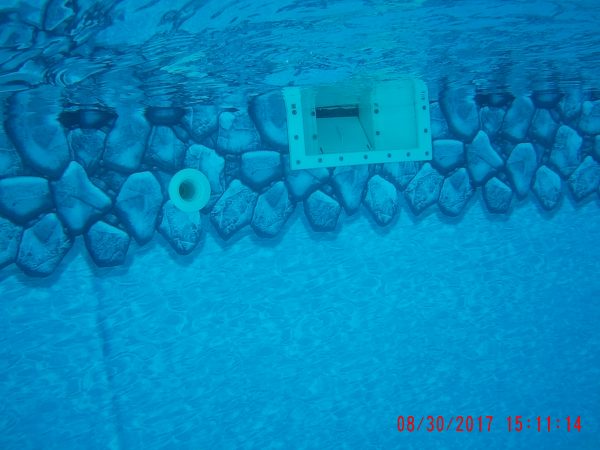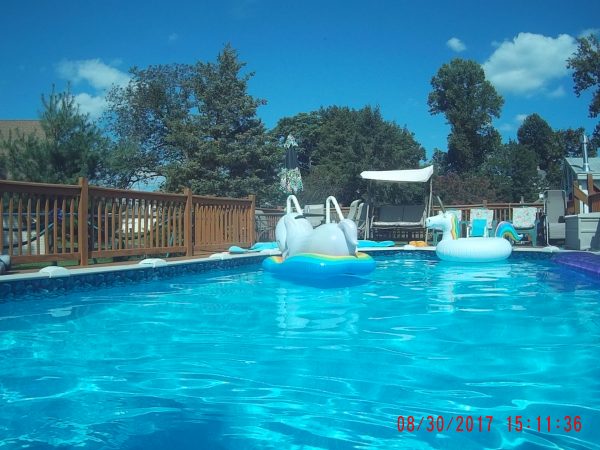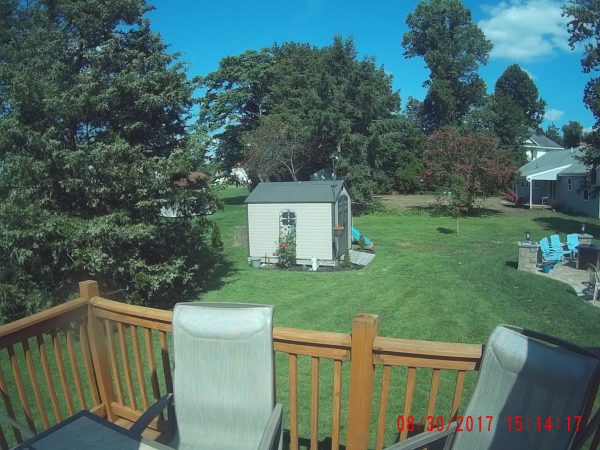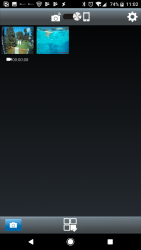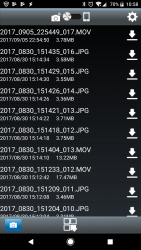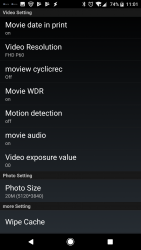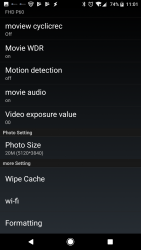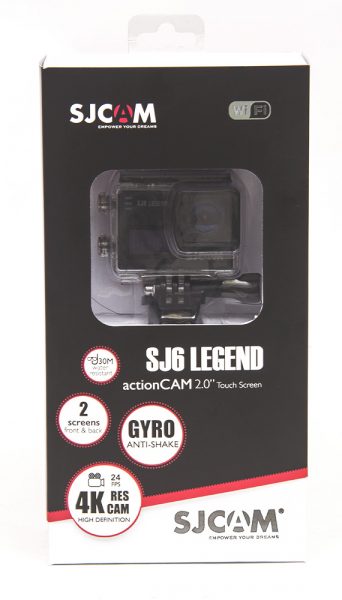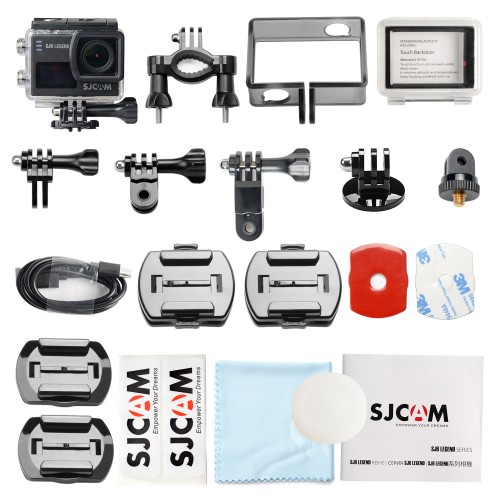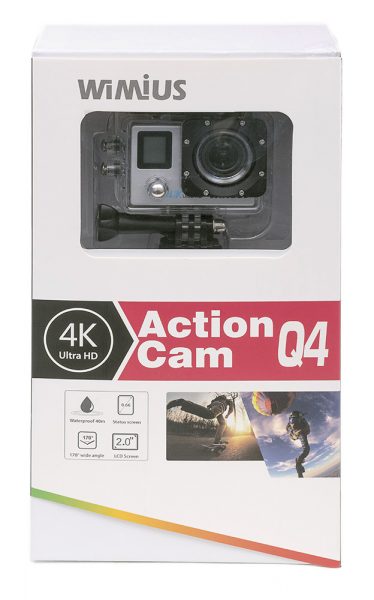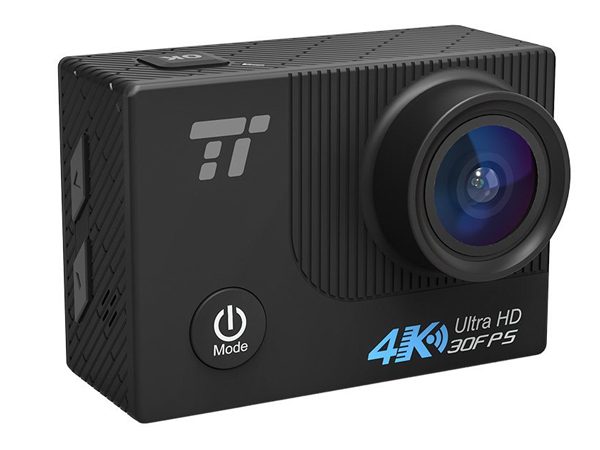
GoPro has forever changed the approach to action video with their line of HERO cameras. While the price range of $150-$400 for their latest models is a lot less than comparable professional video equipment, it can still be more than some would like to spend on this type of gadget. Other manufacturers have broken into this market to lure consumers with lower prices and various other features and functions. One such company is TaoTronics. This camera is made in China and has up to 4K30FPS recording. Keep reading to see what I think!
The TaoTronics 4K Action Camera is a GoPro “Clone” that specification-wise sits somewhere between the GoPro HERO Session and HERO4 Black. The comparative Features are summarized in the table below:
| HERO4 Silver | TaoTronics | HERO4 Black | |
| Video Modes* | |||
| 4K | 15 | 30 | 30 |
| 2.7K | 30 | 30 | 60 |
| 1440 | 0 | 0 | 80 |
| 1080 | 60 | 60 | 120 |
| 720 | 120 | 90 | 240 |
| 480 | 240 | 0 | 240 |
| photo resolution | 12 | 16 | 12 |
| photo shots/sec | 10 | 10 | 30 |
| connectivity | WiFi, Bluetooth | WiFi | WiFi, Bluetooth |
| Water depth | 40 | 30 | 40 |
| Size (mm) | 30 | 30 | 30 |
| 59 | 59 | 59 | |
| 41 | 41 | 41 | |
* Video Mode is the maximum framerate supported in each resolution
The camera comes in a rather ordinary cardboard box.
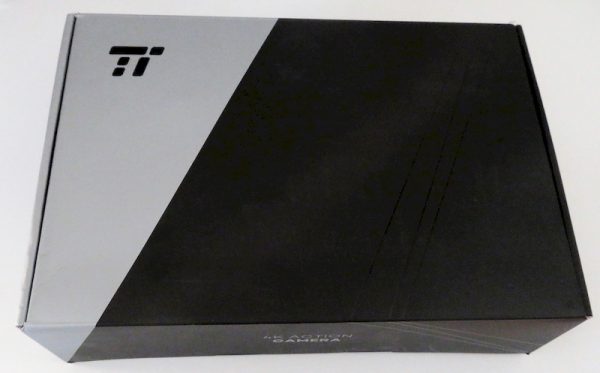
The camera is about the same size and shape as the HERO4 and comes with a waterproof housing that has a similar hinged attachment point as the GoPro line of cameras. It is therefore compatible with a whole ecosystem of GoPro style attachments.
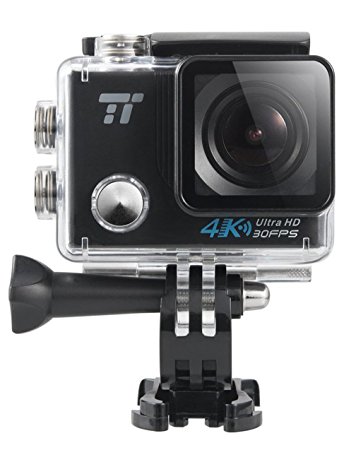
The camera also comes with a protective mount backing (that fits onto the hinge of the waterproof front and has slots for a nylon belt), a tubeframe mount, several adhesive and hinged mounts for surface mounting.
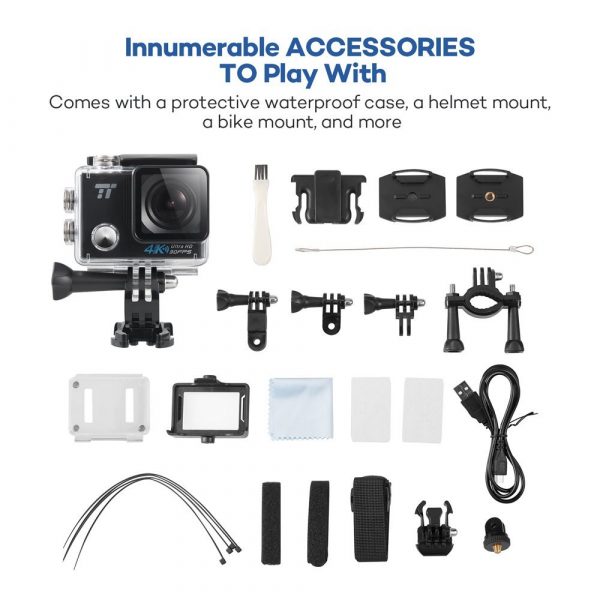
The system also comes with a snap on case with 1/4-20 mounts on the top and bottom and a spring clip mount for attaching to a belt or similar. Hinged mounts that are orthogonal allow the camera to be tilted in 2 dimensions and a male 1/4-20 mount (which allows any camera with a tripod mount to interface with GoPro fittings) and a female 1/4-20 mount are also included to permit the camera to be swiveled in each direction. Specific mounts, for mounting to the chest or helmet, pontoon and selfie sticks, and suction mounts are not included.
Inside the packaging provides some illustrations of how the included accessories can be used to mount the camera to a helmet or bicycle handlebar.
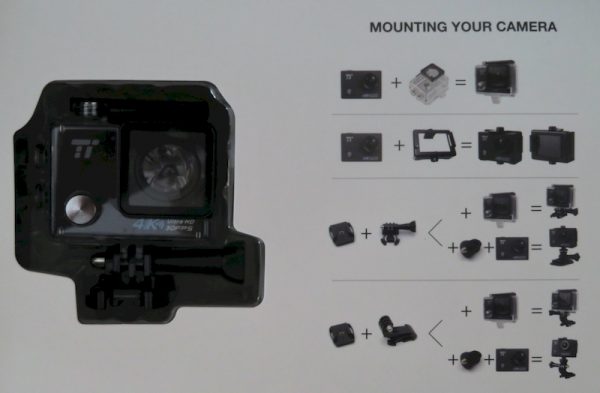
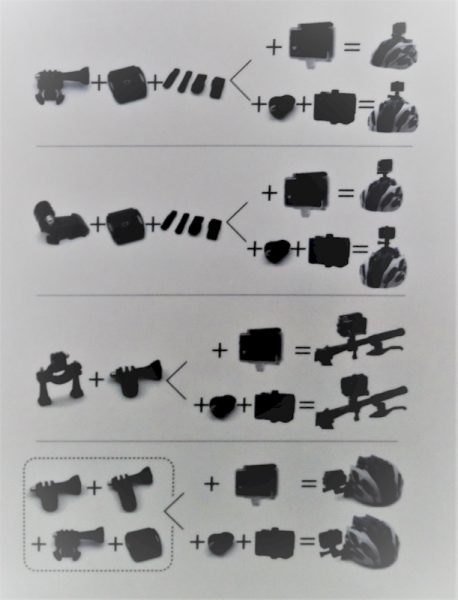
The buttons on the waterproof case are spring loaded pins that penetrate a gasket. There isn’t an impermeable diaphragm on the inside of the case so water penetration is a definite possibility.
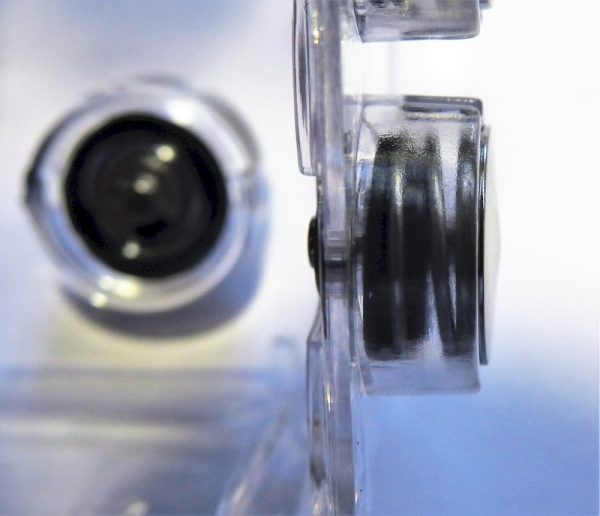
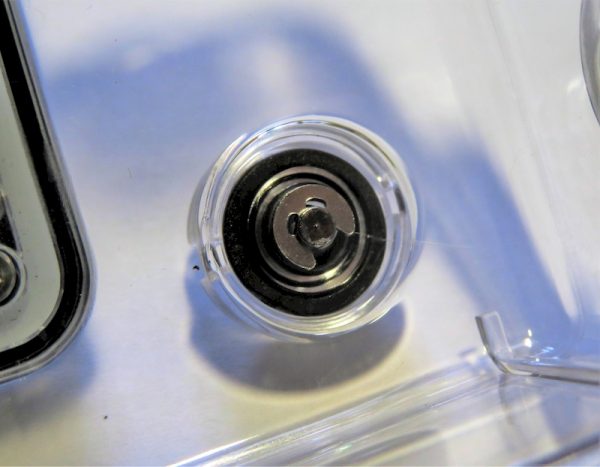
The camera layout is similar to the HERO4 as well, with a power/mode button on the front, an OK/Start/Stop button on the top, an up/down button on the side and a screen on the back.
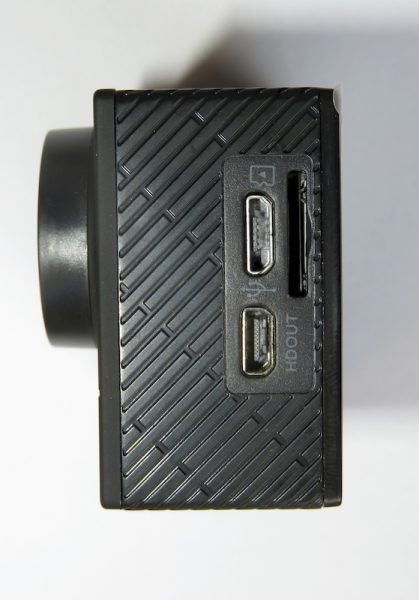
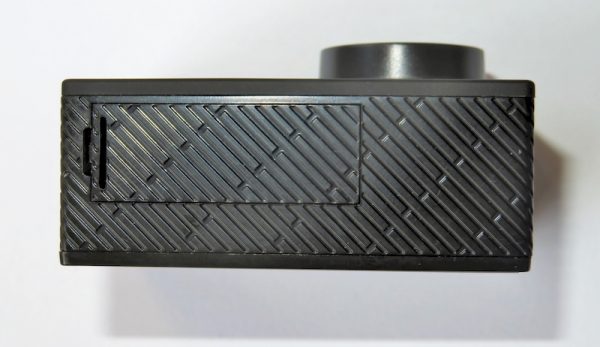
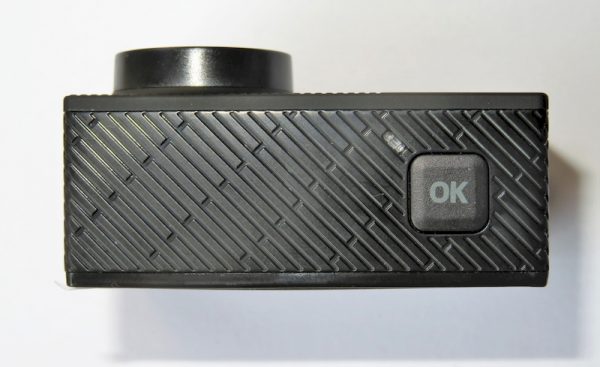
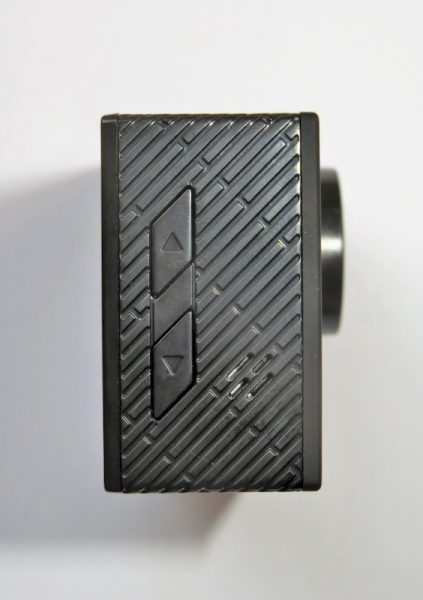
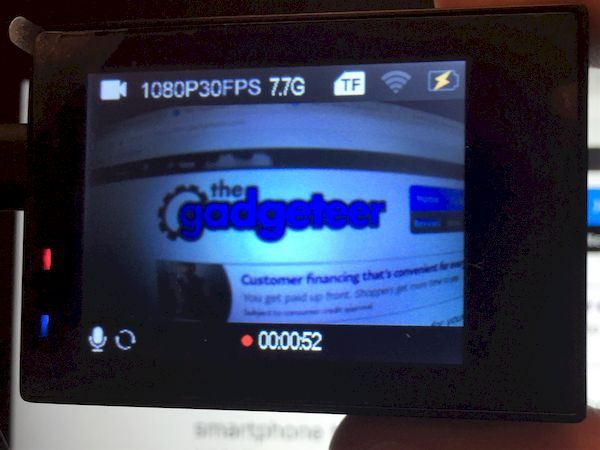
One noticeable difference is that this camera doesn’t have a LCD status window or LED indicators on the front of the camera. Actually, it is difficult to determine that the camera is recording from the front, so in a situation where you’re recording a selfie, you will have to look at the back or a smartphone with XDV running to make sure the recording has started or is in progress. Another difference is that this camera doesn’t have any feature similar to a highlight button, which is located on the side of the HERO4 and can be used to bookmark significant sections of the video. The screen is not touch sensitive like it is on the HERO4 but since the screen is most often in the housing, and since this doesn’t have the video editing features of the HERO4, a touchscreen isn’t really needed. The screen comes with a matte screen protection on top of a clear glossy screen protector on top of the plastic glossy screen cover that is part of the case. I prefer to leave the matte cover on to reduce glare from the sun. The camera also has a blue LED on the back that is lit while powered and blinking while recording and a red LED that is lit while externally powered and blinking while charging. The LEDs can be disabled if the camera is used as a dashcam.
The camera is powered by the battery below. It appears to be a typical HERO type battery.
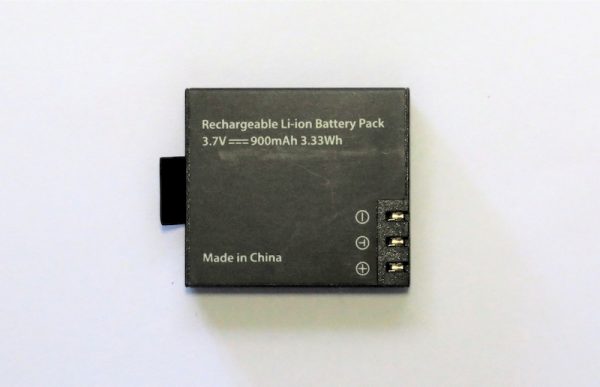
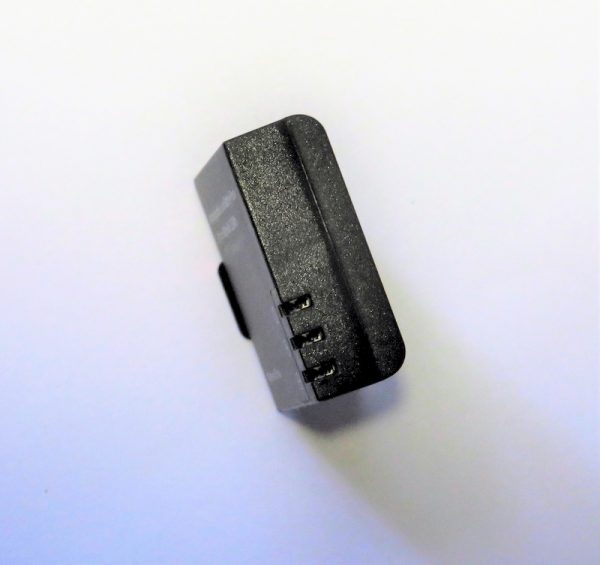
The battery door is held in place by a springy piece of plastic and is completely removable. A plastic tab on the battery help to pull it out.
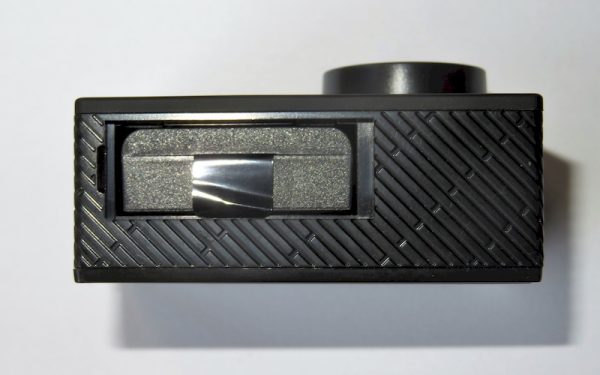
The standard operation is menu driven and circulates through video recording, camera recording, slow-mo recording, playback and settings screen. To change the mode press the mode button and to start or stop operation in the desired mode press the OK button.
The video recording screen shows set resolution, memory remaining, WiFi signal, and battery strength. The bottom of the screen shows if the sound is recorded, if the image is rotated, loop recorded, time lapse recorded, and the elapsed time of the recording.
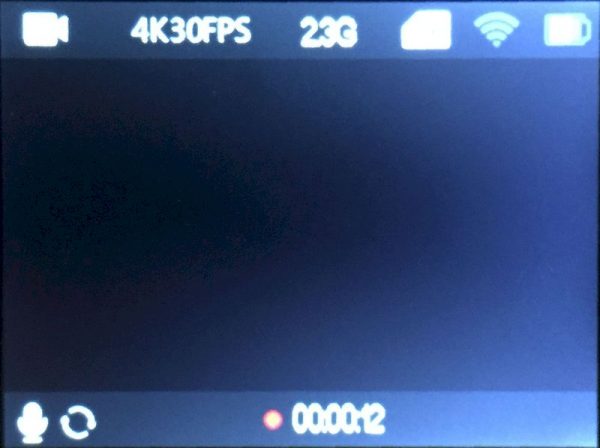
The still shot screen shows set resolution, memory remaining, WiFi signal, and battery strength. The bottom of the screen shows if dramashot is enabled, what the delay timer or the auto timer is set to, and the current time.
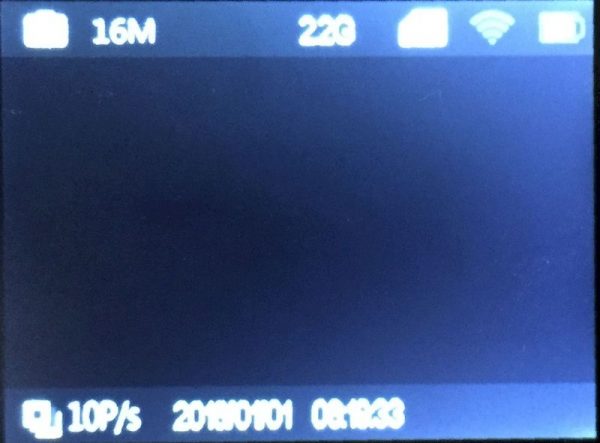
The slow-mo mode is very similar to the video mode
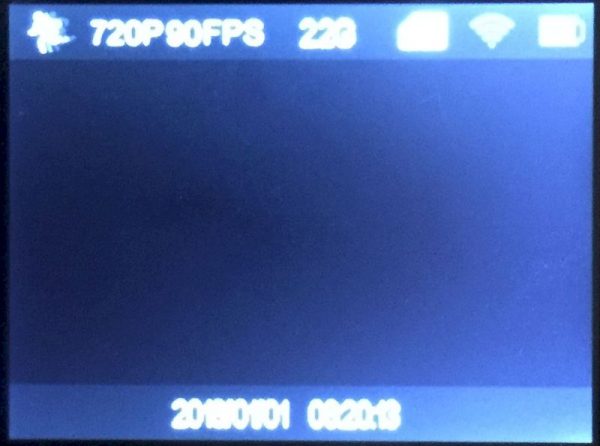
The playback mode displays a preview of the recorded image and what order it is in the camera. The date and time the recording was made, while useful, is not displayed. Once the playback is started the up and down buttons on the side can be used to adjust the speed of the playback from 2x, 4x or 8x speed in either forward or reverse. A long press on OK will bring up a erase menu for the item on the screen.
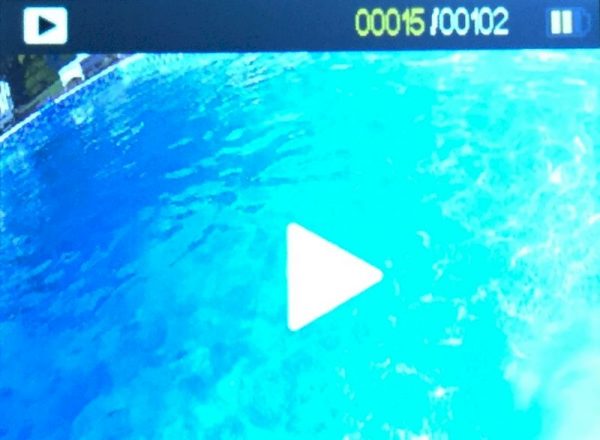
There are a number of settings on the camera to tailor it to your shooting environment and preferences.
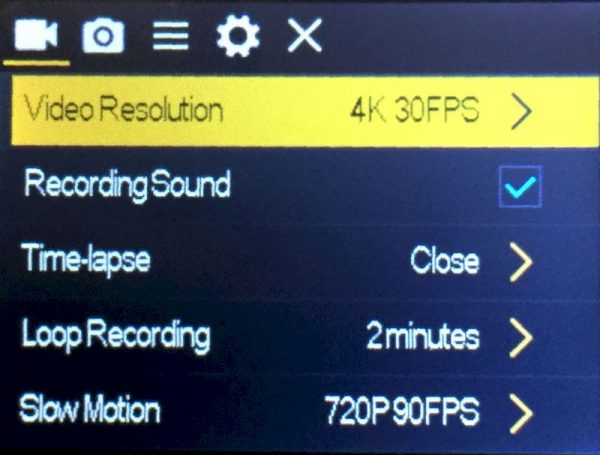
The video resolution setting allows the user to select any of the supported resolutions (even the high frame rate options). Recording sound allows you to select recording a video with or without sound. The TaoTronics has a time lapse mode and can be set up for 0.5, 1, 2, 5, 10, 30, and 60 seconds intervals for video. Loop intervals are limited to 2, 3, and 5 minute segments. These segments seem short compared to the 5, 20, 60 and 120 minute intervals of the HERO4, however, if this is being used as a dashcam, 5 minutes is usually sufficient to capture the good (awesome car on the road), the bad (awesome car hits car in front of you) and the ugly (you hit car in front of you). The drivemode on the TaoTronics is similar to the QuikCapture mode on the HERO4. Not only will the TaoTroincs begin recording as soon as the camera is powered from the MicroUSB port, the camera will begin recording as soon as the power button is pressed. note that loop recording isn’t available if time lapse recording and vice versa.
The TaoTronics time lapse mode can only be set to 3, 10, 15, 20 and 30 second intervals for photo. The TaoTronics will capture a burst of photos by setting up the feature called DramaShot; the camera can be programmed to capture either 3, 5 or 10 photos each time the OK button is pressed. However, there is no way to record continuous burst photos and there is no way to capture a photo while recording a video. The camera has a 3, 5, 10 or 20 second timer. A timer cannot be set to start a time lapse or DramaShot.
The photos and videos share common exposure settings for white balance (auto, sunny, cloudy, incandescent, and fluorescent) and exposure (-3 to 3 by integer steps) There is no shutter setting for the camera. The camera also has a setting to limit interference by fluorescent light by indicating if the electrical frequency is 50 or 60 Hz.
When mounting the camera upside down there is a setting to rotate the image, but there is no accelerometer in the camera, meaning that the camera is unable to determine the correct orientation automatically.
The settings are available in Chinese, English, Japanese, Korean, Russian, German, French, Italian, Spanish, Polish, Portuguese, Dutch, Hindi, and Turkish.
This review is with the firmware version 20170605V23. The camera is compatible with micro SD cards up to 64 gb. I put a 128 gb card in it and the camera ruined it; I needed to reformat the card afterwards. I made the performance tests with a 16gb Class 2 card, which seemed to work OK even though the data rate on some videos is 5.5 MB/s – about 2.5x the minimum guaranteed capability of the card.
I wanted to demonstrate the camera recording features on their own, but also demonstrate some reference of what is being recorded. using the 1/4-20 mounts from the TaoTronics package and a clamp mount from a GoPro-compatible package I rigged a Canon SX720 HS, LeEco Le Pro3 Smartphone, and the TaoTronics together.
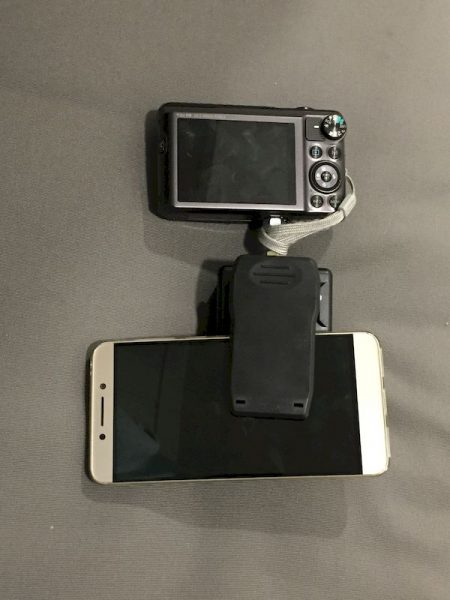
I shot the same scene on all three devices so an unbiased comparison of the recordings can be made. Note that the Canon top resolution is full HD 1920×1080, not 4K. The recording of me walking is at 4K resolution on the LeEco and TaoTronics. The recording of the 9/11 memorial is in FHD on all three devices. I’m making the videos available on a mega.nz site so that you can see them without re-encoding but downloading from here is slow, so please be patient.
Note that I trimmed the length of the video with software that doesn’t re-encode the video so no modification of the recorded image occurs during the process. The wide field of view of the TaoTronics means that each item recorded has less resolution. I’m not sure if this is the reason why the shots from the Canon and LeEco look clearer. Also the lens flare and glare off of the TaoTronics lens is significantly more noticeable than on the other two shots. Unless you’re JJ Abrams this isn’t a good thing.
I made some recordings of the camera near a pool. The reflection of the sun off the water is a good test to see if the camera can effectively record very bright scenes. At the same time the shadow of the shrubs is recorded.
The camera does a good job at recording the pale blue of the water under the surface; the block artifacts of the compression process are visible, but small. Key-frames of the shadow of the waves are visible on the pool bottom but I’m not sure the other cameras would not have captured similar artifacts.
distortion became much more obvious at slo-mo speeds
I literally threw the camera up into the air and had it land in the water. I didn’t notice any water intruding into the case after this test.
To test the action recording I took the camera out for brief run, just holding on to the case so that the picture shook about a lot. I wanted to see how well the camera can record a rapidly changing scene. The results show that the camera recorded the scene without generation of large blocks or skips in the recording. I did have the camera drop audio a couple of times in this situation. I’m not sure why this happened – it may be the sub-optimal MicroSD card I was using. Also, its pretty evident that there is no image stabilization.
The camera did a nice job at recording the same scene in slo-mo
I shot a scene at dusk and the shot looked very similar to what was actually there. I noticed there was a lot of noise in the dimly lit night sky, but some elevated noise at this low lighting is to be expected. I didn’t change the exposure setting but this would have improved the captured image even more.
The companion app for this camera is called XDV and is available from Shenzhen Sunchip Technology on the iPhone and XDV by wisdomplus of the Android play store. The app allows you to set the recording mode of the camera, to view a live stream of the recording, to review recorded images on the camera and to access other settings on the camera. The connection to a camera can only be made by using the WiFi of the camera generated access point, so you’re limited to the range of the camera. It would be great if the camera and smartphone could connect as clients to the same WiFi system, then the range could be arbitrarily large through bridging of multiple antennas.
In the end I think that the recorded video was slightly better on the other two cameras and footage from YouTube (even though this may post processed) looked a bit more polished that what I recorded. If you want to get that last bit of video quality out of your shots or more special features you will probably need to spend a bit more. However, the TaoTronics camera is a very close second. I see myself taking a lot more action shots with this in the future and I think its a good gadget for anyone to have in their arsenal.
Source: The sample for this review was provided by TaoTronics. Please visit their site for more information and Amazon to check prices / order.
Product Information
| Price: | $79.99 |
| Manufacturer: | TaoTronics |
| Retailer: | Amazon |
| Requirements: |
|
| Pros: |
|
| Cons: |
|
Filed in categories: Reviews
Tagged: Action Camera
TaoTronics 4K action camera review originally appeared on The Gadgeteer on October 5, 2017 at 10:34 am.
Note: If you are subscribed to this feed through FeedBurner, please switch to our native feed URL http://the-gadgeteer.com/feed/ in order to ensure continuous delivery.



